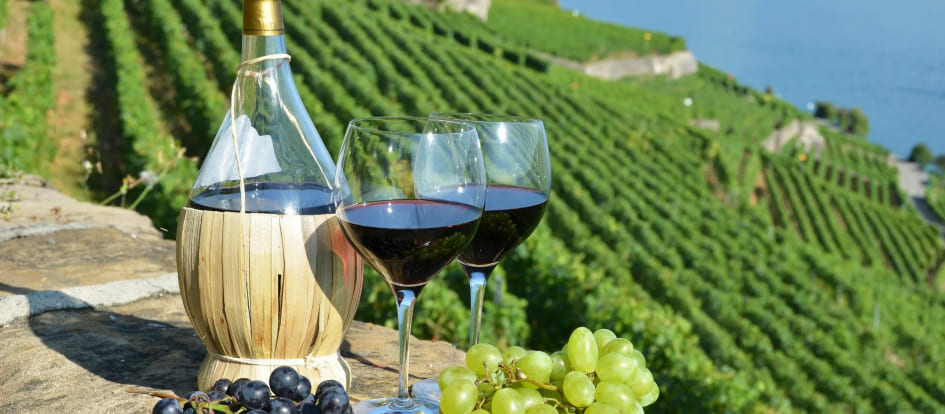
With over 2,000 years of viticulture dating back to the Phoenicians and Romans, Tunisia boasts a deep, sun-kissed wine heritage. Today, the country is reviving and refining its winemaking tradition, producing bottles that surprise even seasoned sommeliers.
Let’s explore the unique story and flavors of Tunisian wine—from the regions and grapes to the must-try labels.
Tunisia’s wine roots go back to Carthaginian times. The famous agronomist Mago, considered the father of Mediterranean viticulture, was born in Carthage and wrote influential texts on wine production. Later, the Romans expanded vineyards across the country, particularly in the Cap Bon region.
Although winemaking declined during Ottoman and Islamic rule, it experienced a revival during French colonization in the 19th century. Today, Tunisia balances tradition with modern techniques, producing wines that reflect its terroir and climate.
Tunisia has eight official wine-producing regions, but the most notable are:
This peninsula northeast of Tunis is Tunisia’s premier wine region. The Mediterranean climate, rich soils, and ocean breezes create perfect conditions for viticulture.
Located near Tunis, Mornag is famous for its Appellation d’Origine Contrôlée (AOC) wines, particularly full-bodied reds.
This coastal town is known for its crisp white wines, often served chilled and paired with seafood.
Tunisia cultivates a mix of Mediterranean and French grape varieties. Some of the most prominent include:
Carignan: Rich and spicy, often blended with other reds.
Syrah: Deep color, peppery notes—great for aging.
Mourvèdre: Earthy and complex.
Cinsault: Light, fruity, and often used for rosé.
Muscat of Alexandria: Aromatic and floral.
Chardonnay: Adapted well to the climate; buttery and fresh.
Clairette: Delicate and dry, often used in blends.
Tunisia produces a wide range of wine styles:
Usually bold and full-bodied, with sun-drenched fruit, herbal notes, and soft tannins. Ideal with grilled meats and spicy dishes.
Crisp, fruity, and dry—perfect for Tunisia’s warm weather and Mediterranean cuisine. Many locals prefer rosé as their go-to wine.
Fresh, citrusy, and light, with some oaked varieties offering a creamy mouthfeel.
One of Tunisia’s oldest and most prestigious wineries, known for its rich Cabernet-Syrah blends and smooth Mornag Rouge.
A family-run estate in the Bou Argoub region producing award-winning reds like Magnifique and Selian, which reflect elegance and terroir.
This cooperative includes over 2,500 growers and produces popular brands like:
Cuvée Magon (named after the Carthaginian agronomist)
Muscat de Kelibia – a crisp white wine ideal with seafood
A rising star in boutique wine, known for its small-batch production and creative blends.
Tunisian cuisine is flavorful, spicy, and diverse—making it a great match for local wines.
Red wines: Pair with lamb, mechoui (roasted meat), or couscous with spicy harissa.
Rosé wines: Excellent with grilled fish, salads, or brik à l'œuf.
White wines: Try with seafood, octopus salad, or tajine.
Wine lovers can now tour Tunisia’s vineyards, taste local vintages, and enjoy panoramic views of the countryside. Highlights include:
Wine tasting in Cap Bon near Grombalia or Bou Argoub
Vineyard tours in Mornag
Sea-view wineries in Kelibia
Winery visits often include tours, tastings, and food pairings, offering a delightful rural escape just hours from the beach or city.
Tunisia is still an undiscovered gem in the global wine scene, but it’s gaining momentum. Exports are increasing, and local producers are investing in quality, sustainability, and organic practices.
With more wine bars opening in Tunis, La Marsa, and Hammamet—and a growing wine-savvy community—Tunisian wines are quietly stepping into the spotlight.
Carrefour and Monoprix (in Tunisia) often stock local selections.
Upscale restaurants in Tunis, Sidi Bou Saïd, and Djerba serve premium local labels.
Online, look for export options like Cuvée Magon, Muscat de Kelibia, or Magnifique.
Tunisian wine is more than just a drink—it's a journey through ancient lands, sunlit vineyards, and the soul of Mediterranean life.